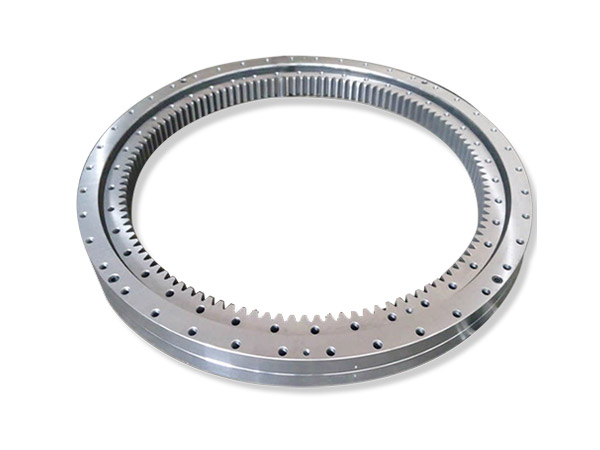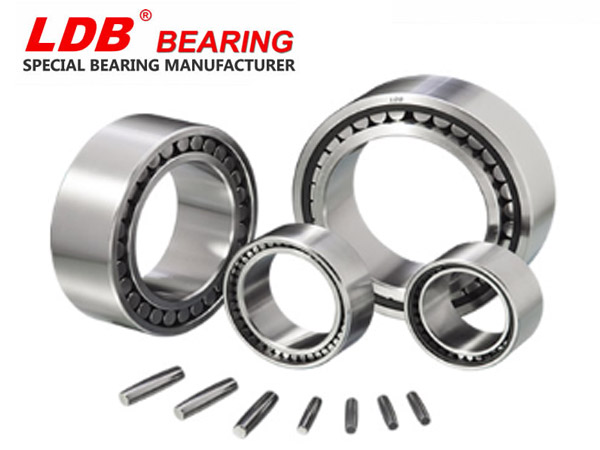Почему опорно-поворотные подшипники должны быть отожжены? Цель отжига и тип процесса
Почему опорно-поворотные подшипники должны быть отожжены? На самом деле, отжиг опорно-поворотного подшипника представляет собой процесс термической обработки подшипников. Как правило, металл подшипника нагревают до определенной температуры и поддерживают в течение определенного периода времени, а затем металл охлаждают с подходящей скоростью. Этот метод повышает ударную вязкость подшипниковой стали. , Уменьшите твердость подшипника и остаточное напряжение, чтобы уменьшить вероятность деформации и трещин, а также повысить стабильность материала подшипника.
Почему опорно-поворотные подшипники должны быть отожжены?

Цель отжига опорно-поворотного устройства может быть по трем причинам:
1. Процесс отжига может снизить твердость подшипниковой стали, улучшить пластичность и облегчить последующую резку и деформацию.
2. Отжиг может измельчать зерна материала подшипника, устранять структурные дефекты, вызванные литьем, ковкой и сваркой подшипника, выравнивать структуру и состав стали, а также улучшать характеристики стали для подготовки к более позднему нагреву. лечение.
3. Процесс отжига может устранить внутреннее напряжение в стали и предотвратить или уменьшить возможность деформации и растрескивания подшипника. В одном случае процесс отжига предназначен не только для отжига металлических материалов, но и для неметаллических материалов. После понимания того, почему опорно-поворотные подшипники следует отжигать, следующий редактор представит типы процессов отжига опорно-поворотных устройств. На самом деле существует много типов процессов отжига, и процессы, применимые к разным стальным конструкциям, также различны.
Тип процесса отжига для поворотного подшипника

1. Рекристаллизационный отжиг
Рекристаллизационный отжиг, также называемый полным отжигом, представляет собой процесс отжига, при котором сплав железа с углеродом аустенизируется, а затем медленно охлаждается или останавливается в состоянии, близком к равновесному. Температура нагрева углеродистой стали обычно составляет Ac3+ (30–50 ℃); легированная сталь Ac3+(500~70℃); время выдержки зависит от марки стали, размеров заготовки, количества установленной печи, выбранной модели оборудования и т. д. определяются факторы. Чтобы переохлажденный аустенит претерпел перлитное превращение, охлаждение рекристаллизационного отжига должно быть медленным, а печь охлаждается примерно до 500 ℃ и охлаждается воздухом.
Этот процесс отжига в основном используется для поковок, отливок и горячекатаных профилей из доэвтектоидной стали, как правило, из среднеуглеродистой стали и конструкционной стали из низко- и среднеуглеродистых сплавов, а иногда и для их сварных компонентов; он не пригоден для заэвтектоидной стали. Поскольку рекристаллизационный отжиг заэвтектоидной стали необходимо нагревать выше Acm, при медленном охлаждении цементит выделяется по границам аустенитных зерен и распределяется в виде сетки, в результате чего повышается хрупкость материала, оставляя скрытые опасности термической обработки.
2. Равномерный отжиг
Равномерный отжиг, также известный как диффузионный отжиг, предназначен для уменьшения сегрегации химического состава металлической отливки или поковки и неоднородности структуры. Его нагревают до высокой температуры, выдерживают длительное время, а затем медленно охлаждают для гомогенизации химического состава и структуры. Цель процесса отжига. Температура нагрева гомогенизирующего отжига обычно составляет Ac3+ (150-200 ℃), то есть 1050-1150 ℃, а время выдержки обычно составляет 10-15 часов, чтобы обеспечить полное осуществление диффузии и цель устранения или уменьшения неравномерного состава или структуры велика. Из-за высокой температуры нагрева, длительного времени и крупных зерен диффузионного отжига рекристаллизационный отжиг или нормализация должны выполняться после диффузионного отжига для повторного уточнения структуры.
3. Неполный отжиг
Неполный отжиг представляет собой процесс отжига, при котором сплав железа с углеродом нагревают до температуры между Ac1 и Ac3 для достижения неполной аустенизации с последующим медленным охлаждением. Неполный отжиг в основном подходит для поковок и деталей качения из средне- и высокоуглеродистой и низколегированной стали. Его целью является уточнение структуры и снижение твердости.
4. Отжиг для снятия напряжения
Одной из основных причин, по которой поворотные подшипники следует отжигать, является процесс отжига для устранения остаточных напряжений, вызванных обработкой пластической деформацией, сваркой и т. д. и существующих в отливке. После ковки, литья, сварки и резки внутри заготовки возникает внутреннее напряжение. Если это не устранить вовремя, заготовка будет деформироваться во время обработки и использования, что повлияет на точность заготовки. Очень важно использовать отжиг для снятия напряжения, чтобы устранить внутреннее напряжение, возникающее во время обработки.
5. Изотермический отжиг
Изотермический отжиг заключается в том, чтобы нагреть сталь или заготовку до определенной температуры и выдержать ее в течение определенного периода времени, затем быстро охладить до определенной температуры в диапазоне температур перлита и выдержать изотермически, чтобы аустенит превратился в перлитно- тип структуры, а затем в воздухе. Процесс отжига со средним охлаждением.
Этот процесс подходит для среднеуглеродистой стали и низколегированной стали, и его целью является улучшение структуры и снижение твердости. Температуру нагрева доэвтектоидной стали Ac3+(30~50)℃, а температуру нагрева заэвтектоидной стали Ac3+(20~40)℃, выдерживают ее определенное время и проводят изотермическое превращение с охлаждением печи до незначительного ниже температуры Ar3, а затем с воздушным охлаждением. . Структура и твердость изотермического отжига более однородны, чем при кристаллизационном отжиге.
6. Сфероидизирующий отжиг
Сфероидизирующий отжиг представляет собой процесс отжига для сфероидизации карбидов в стали. Его нагревают на 20-30°С выше Ac1, выдерживают некоторое время, а затем медленно охлаждают до получения структуры сферических или зернистых карбидов, равномерно распределенных по ферритовой матрице.
Сфероидизирующий отжиг в основном используется для заэвтектоидной стали и легированной инструментальной стали (например, режущие инструменты, измерительные инструменты, формы и подшипники и т. д. для всех марок стали). Его цель состоит в основном в снижении твердости, улучшении обрабатываемости и подготовке к последующей закалке. Существует множество методов процесса сфероидизирующего отжига, и два наиболее часто используемых процесса – это обычный сфероидизирующий отжиг и изотермический сфероидизирующий отжиг. По сравнению с обычными методами отжига сфероидизирующий отжиг может не только сократить цикл, но и сделать сфероидизированную структуру однородной, а также строго контролировать твердость после отжига.
7. Рекристаллизационный отжиг
Рекристаллизационный отжиг также называют промежуточным отжигом. Это процесс термической обработки, при котором металл после холодной деформации нагревают выше температуры рекристаллизации и выдерживают в течение соответствующего времени для рекристаллизации деформированных зерен в однородные равноосные зерна для устранения деформационного упрочнения и остаточного напряжения.
Вышеизложенное представляет собой введение причин, по которым поворотный подшипник должен быть отожжен. Он также включает типы процессов отжига и их соответствующие характеристики и введение в процесс. Я надеюсь помочь вам получить более четкое представление о процессе отжига. Кроме того, наша компания производит опорно-поворотные устройства, опорно-поворотные устройства и поворотные приводы различных типов и точности. Если у вас есть какие-либо потребности, пожалуйста, не стесняйтесь спрашивать.



